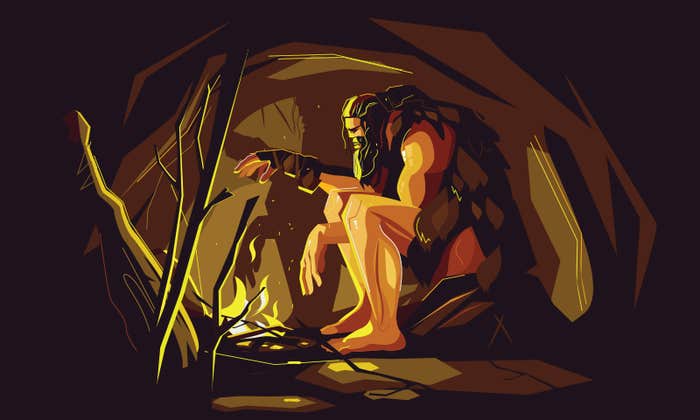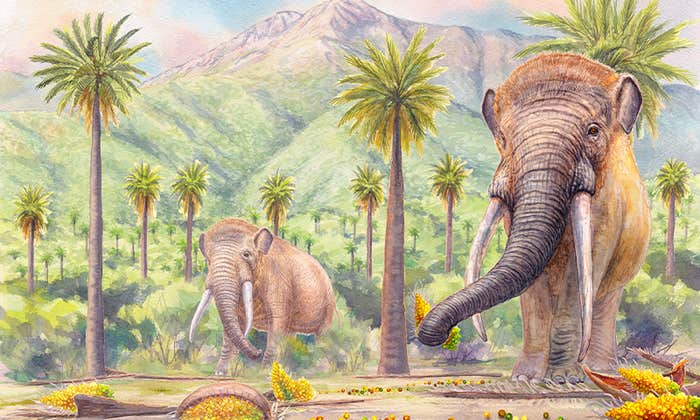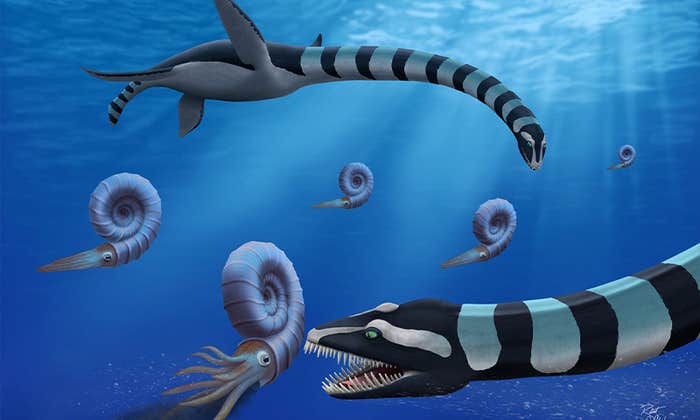Just before the atomic bomb drops on Hiroshima, the land below appears smooth as glass. The bomb falls on a grid of streets aligned between lazy rivers. In footage from 1945, the city’s exceptional stillness seems to give the explosion oxygen.
The calm before the storm is a standard trope for movie directors. Composers too. Without a prior silence, there is no “KaBoom!” Although they’d never admit it, scientists fall into the same storytelling trap. There’s no better way to emphasize a phenomenon than to clear the space around it.
Science is rife with dramatic entrances: the Big Bang, the origin of life, the origin of animals. Biology students learn that animal lineages blossomed in the Cambrian explosion, about 530 million years ago. Shrimp-like monsters named anomalocaris swooped through the seas, stuffing prey into voracious, donut-shaped mouths. Large worms that resembled penises—named priapulids after the Greek god of fertility—sifted nutritious snacks out of the water. Other animals hobbled along on spiky legs; their fossils look so strange that the paleontologist who discovered them named them Hallucingenia for their “bizarre and dream-like appearance.”
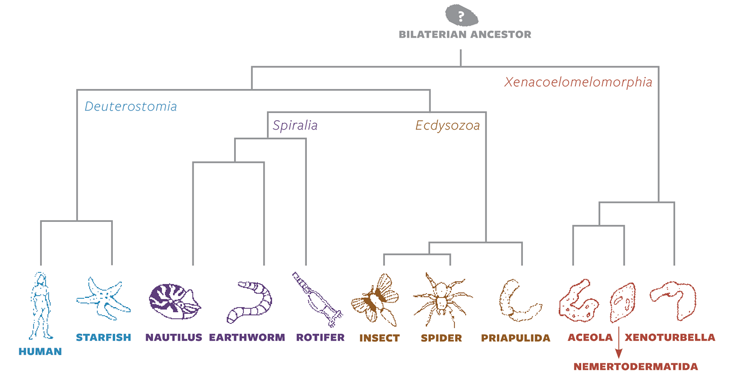
Most of the animal groups alive today evolved within the Cambrian explosion, a relatively short time frame—a span of several million years. At least that’s what the scientists say. What prompted scientists to call this chunk of the Cambrian period, which stretches from 541 to 485 million years ago, an explosion, was the near absence of life in the tens of millions years preceding it, and the lack of new animal groups after it.
However, it now appears that squishy creatures were eating, mating, and struggling for survival long before the so-called explosion. According to a host of bold scientists, recent findings suggest life evolved gradually long before explosion. Suddenly, the dogma about the origin of most animal groups seems artificial.
“If you look at the Cambrian fossil record, it is amazingly unexplosive,” says Graham Budd, a paleontologist at Uppsala University in Sweden. “It is really quite a stately process,” he adds. “It’s not true that everything suddenly appears.”
Harvard paleontologist Stephen Jay Gould waxed poetic on the Cambrian explosion in his 1989 book A Wonderful Life. A graceful writer as well as a scientist, he muffled the period preceding the burst, and had the explosion in major animal groups, called phyla, fill a vacuum. Fits and starts are a hallmark in Gould’s evolutionary thinking. The fossil record, he wrote, “is punctuated by brief, sometimes geologically instantaneous, episodes of mass extinction and subsequent diversification.” The fossilized remains of a bizarre assortment of animals dating back 508 million years to the heart of the Cambrian period inspired Gould’s vision, along with the relative absence of fossils 40 million years prior. But what seems silent so long ago may not have been.
This February, more than a decade after Gould’s passing, evolutionary biologists published findings in Nature that hint at dramas occurring in oceanic dirt long before the Cambrian burst. Andreas Hejnol, an evolutionary biologist at Sars International Center for Marine Molecular Biology in Norway, led the project. He places a group of flat worms that resemble tiny flecks of paint, called acoels, and an enigmatic group of marine worms, Xenoturbella (the Latin name means strange worm), near the root of the animal life tree. Unfortunately, traces of tiny, squishy worms don’t tend to stick around. “It means we might never find the fossils that gave rise to all this diversity,” Hejnol says.
Hejnol and his team, though, did not study fossils. They created an animal tree of life using gene sequencing. They compared about 800 genes from 76 animals ranging from worms, to chickens, to people. With this data, they built a tree of life based on the genetic differences between species. They discovered that the wee worms branch off near the tree’s root. If our earliest ancestors were soft and slight, like these simple worms, they might have lived long before the Cambrian explosion.
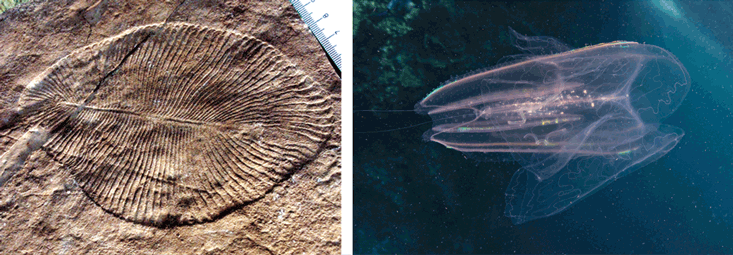
What has been discovered in fossil beds preceding the Cambrian explosion are remnants of mysterious organisms shaped like puffy ferns, segmented balloons, and spirals. Named the Ediacarans, these creatures bear no resemblance to anything alive today. A popular theory suggests the Ediacarans were an animal-like kingdom that went extinct before ours blossomed in the Cambrian explosion. This story suits Gould’s ideas about cycles of extinction and explosion. However, it’s backed up by a lack of fossils, and as any logistician will tell you, the absence of evidence is not evidence of absence.
Budd, a paleontologist who specializes in animal evolution, questions the moat that scientists place between Ediacarans and animals. “We can’t say Ediacarans don’t look like animals since there’s no way to know what early animals looked like then,” he says. Budd adds there’s no reason to assume the connection between Ediacarans and animals is anything but fluid.
When Budd imagines the 50-million-year period preceding the Cambrian explosion, he envisions ocean floors populated by Ediacarans, as well as creatures that share a key characteristic of animals including humans, worms, and flies—namely, bilateral symmetry. Bilaterally symmetrical animals have heads, rears, and distinct left and right sides. They tend to move with their head facing forward. According to trees of life constructed with DNA evidence, all bilaterally symmetrical animals share a common ancestor from whom they inherited symmetry. The tiny acoel and Xenoturbella worms are, indeed, bilaterally symmetrical.
Budd believes in a dynamic interaction between Ediacarans and ancient, wormy bilaterians that drove diversification. He speculates that in spots where the Ediacarans lived and died, their bodies left splotches of nutrients on the barren ocean floor. Because resources were scarce, worms might have adapted novel methods to obtain what they could before their brethren did. Some developed innovative ways to scavenge and digest; some learned to burrow. It was survival of the fittest. Budd calls this his Savannah Hypothesis. He likens it to a theory on how our human ancestors began to walk upright when they needed to move quickly across African grasslands to find spottily distributed food. In this vision of early animal life, evolution gradually occurred over tens of millions of years prior to the Cambrian explosion.
Although there is scant evidence in the fossil record to show that worms interacted with Ediacarans, molecular biologists have argued for earlier animal origins for over a decade. These biologists calibrate “molecular clocks” by counting the number of changes in DNA between a pair of living animals, and placing that numerator over the number of years that passed between them and a fossil ancestor they indisputably share. With this rate on hand, the researchers then infer the time passed between more disparate living animals, who shared an ancestor a very long time ago. Most of these reports conclude that the first animals arose more than 700 million years ago. But there’s hardly any fossil evidence to back up the claim, and that has led to controversy. “It’s always been hard for paleontologists to accept that theory,” says Blair Hedges, an evolutionary biologist at Temple University in Philadelphia.
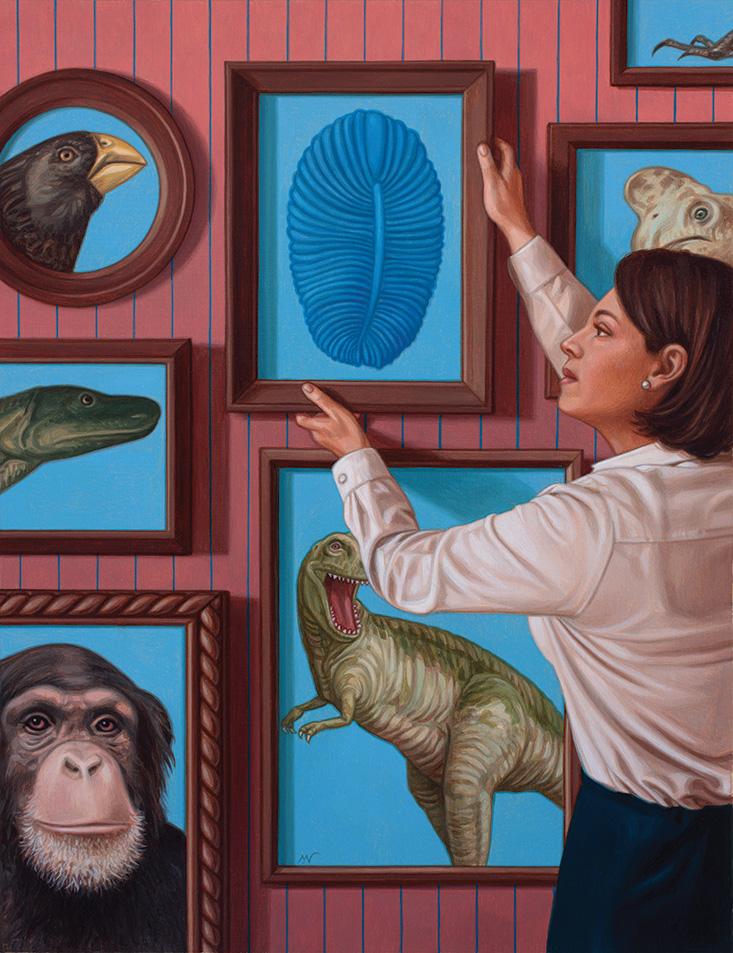
Hedges speculates that a low level of atmospheric oxygen before the Cambrian explosion would have made early animal life possible for tens of millions of years prior. Indeed, geologists have found traces of this gas in rocks, along with a surge in oxygen by the mid-Cambrian. Hedges says that uprising accounts for why animals grew larger and developed hard skeletons that are abruptly so apparent in the fossil record during the explosion.
As for the line about how most major groups of animals—some 36 phyla—appeared in the Cambrian explosion, this too has a flaw rooted in humankind’s desire to arrange the world around them. Phylum and other ranks, such as class, order, and family, are arbitrary constructs. “They were a way to slice up all the diversity in nature because it was too much to take it all in at once,” explains Casey Dunn, an evolutionary biologist at Brown University.
Dunn’s perspective has been shaped by observing mysterious animals he scoops from the ocean, such as shimmering, colonial, gelatinous siphonophores. Creatures that defy expectation. The problem with rankings like phylum, class, and order, Dunn says, is that they are biased by scientists who arbitrarily decide what features are relevant and which are not. Dunn sees no reason for why there should be 36 phyla (or, as some argue, 32, or 34, or 37). He says there could be as many phyla as the number of ancestors that any two species share. And since there are about 2 million known species, that number could be 2 million minus one. If this were the case, the Cambrian would not nearly contain them all.
Dunn, skilled in computer science and field biology, has a mop of dirty blond hair and speaks with a hippie twang. Referring to the arbitrariness of terms like phylum, he says, “It’s as if someone declares that one country has more music than another because they count more genres being played there. Well, one person might care a lot about melody and classify genres according to that scheme, while another person wouldn’t get the same result because they put emphasis on rhythm instead.”
In 2013, Dunn and his colleagues caused an uproar with another tree-of-life study. In a DNA analysis, they found that complex sea creatures, called comb jellies, or ctenophores, have roots that go deeper than those leading to acoel worms and even headless, gutless sponges, long considered to resemble the prototype of a primitive animal. The study implies that animals had time to evolve a tremendous amount before bilaterally symmetrical animals arose—and left a plethora of fossils—in the Cambrian explosion. This pre-explosion period must have lasted long enough that ancient lineages diversified enough to give rise to modern comb jellies—with bioluminescent beads, little brains, and feathery teeth—on one hand, and passive sponges on the other.
Dunn’s finding on comb jellies was contested last December. Scientists challenged his view that comb jellies evolved before gutless sponges. Hejnol’s recent suggestion of oceans rich in life prior to the Cambrian explosion will no doubt be contested as well. Indeed, the origin of animals half a billion years ago is one of the hardest evolutionary problems to solve, despite dramatic advances in DNA analysis. For his part, Hejnol is content to let the disruptive findings sit. “I like the provocation of evolutionary thinking,” he says. “When we find something that makes us think, ‘This cannot be,’ it means we need to stop and ask ourselves why we think it cannot be.”
Charles Darwin would have understood Hejnol’s position. Uncertainty laces On the Origin of Species. Chief among the difficulties he enumerated in his theory of evolution by natural selection was the lack of fossils to prove that species transform over evolutionary time. When he published the book in 1859, the dogma was the sudden appearance of animals in the fossil record was proof of the immutability of species. Yet Darwin felt strongly that these fossilized creatures could not have appeared from the ether. If his theory on evolution was true, the world prior to those known fossils must have been “swarmed with living creatures.” In humility, Darwin acknowledged the geologists before him, and wrote, “I feel how rash it is to differ from these great authorities.” He continued, “For my part … I look at the natural geological record as a history of the world imperfectly kept, and written in a changing dialect; of this history we possess the last volume alone, relating only to two or three countries.”
A silence before a storm requires closer listening.
Amy Maxmen is a journalist who writes for Nautilus, Wired, Newsweek, Nature, and other magazines. She has a Ph.D. in evolution from Harvard.





















